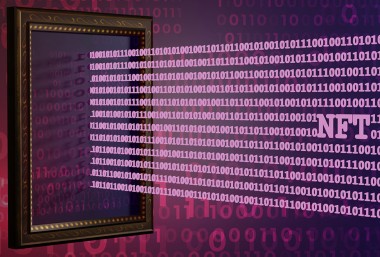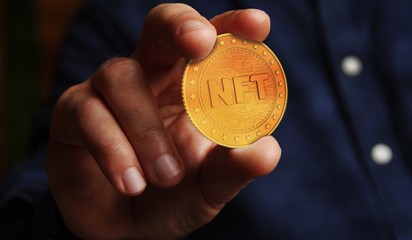Cryptocurrencies have in part dominated headlines globally in recent years. The invention of Bitcoin and its subsequent explosion in popularity led to many new developments in the world of cryptocurrency, with people all over the world building on the existing framework and helping to create a new, global financial system.
One such development that has entered the public eye are non-fungible tokens (NFTs). NFTs are a form of cryptocurrency, but unlike Bitcoin where one unit is equivalent to another, NFTs represent a unique digital value. The possibilities of what makes up an NFT are endless but can include digital assets such as a piece of artwork, a video or drawing. The NBA even recently released its own line-up of NFTs that feature highlights from games, similar to a digital trading card.
But while the unique ownership of a digital asset is an exciting concept for creators and consumers alike (in 2021 alone NFT sales volume totalled US$24.9 billion), what can be unclear is what exactly a purchaser of an NFT is legally buying.
NFTs and copyright
Naturally, the most popular form of NFT is digital artworks.
Original art, such as a painting, has inherent copyright protection. In New Zealand, the copyright period extends to 50 years after the death of the author. These rights can be assigned and are sometimes included when a piece of art is sold.
For digital art, to which an NFT might attach, the same is true.
And while an NFT can present a level of authenticity as to the NFT’s ‘uniqueness’, there is nothing inherent in an NFT that gives any assurance about the NFT’s underlying IP rights.
Where this may cause problems is for NFT consumers who misunderstand what rights they have and that could lead to potential copyright infringement.
Uncertainty around copyright for NFTs
One recent example of a misunderstanding of copyright comes from Spice DAO, a crypto investment group who crowd raised funds to purchase an artbook for a failed production of a movie version of Frank Herbert’s novel Dune in the 1970s. The attempt, headed by Avant Garde film maker Alejandro Jodorowsky, did not reach production but a large amount of concept art was produced. After purchasing a book containing such art at auction, Spice DAO announced that they intended to produce an animation series based on the artbook and a line of NFTs. This was met with widespread derision and amusement by the online community.
Spice DAO had assumed that upon purchasing the artbook, the copyright in the art also transferred to them. In fact, they had purchased one edition of a limited number of prints.
This highlights that when purchasing an NFT consumers should carefully read the contract involved to understand what exactly they are purchasing.
General action has also been taken against NFT designers by brands for the misuse of trademarks. Recently, high end fashion manufacturer Hermes issued a cease and desist letter against a digital designer who had created a line of Birkin NFTs, which were inspired by the company’s exclusive Birkin handbags. Much like the bags themselves, the NFTs have sold for up to as high as US$42,000.
Going forward
There is nothing inherent in an NFT that means normal IP rights do not apply.
Those peddling in NFTs will need to ensure they have appropriate rights to either sell or licence the digital art that goes with the NFTs. Those purchasing an NFT will need to make sure they have read and understood the contract in order to know what exactly they are purchasing.










